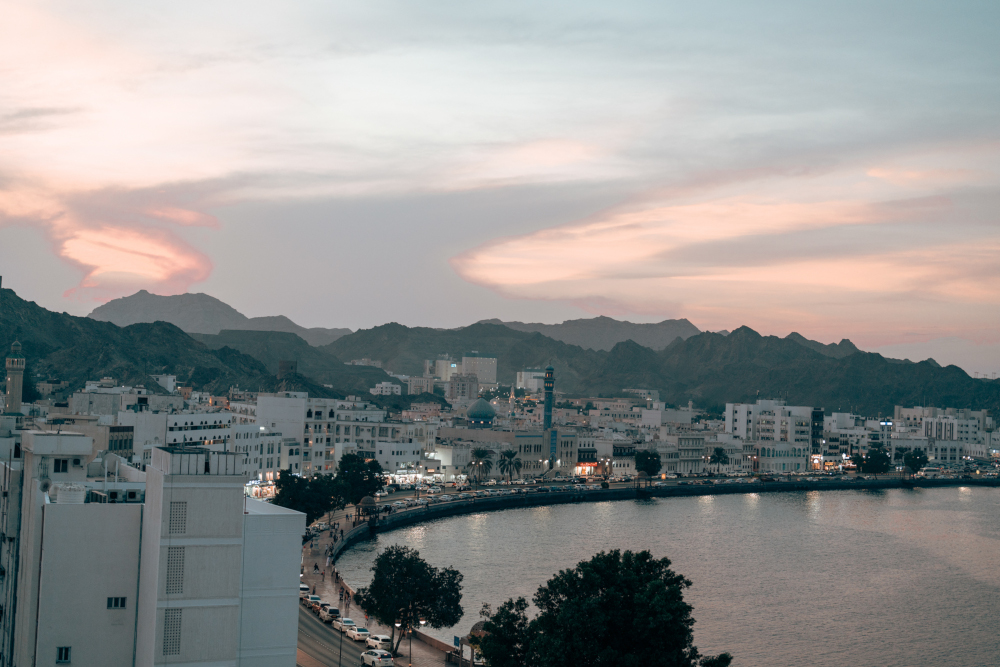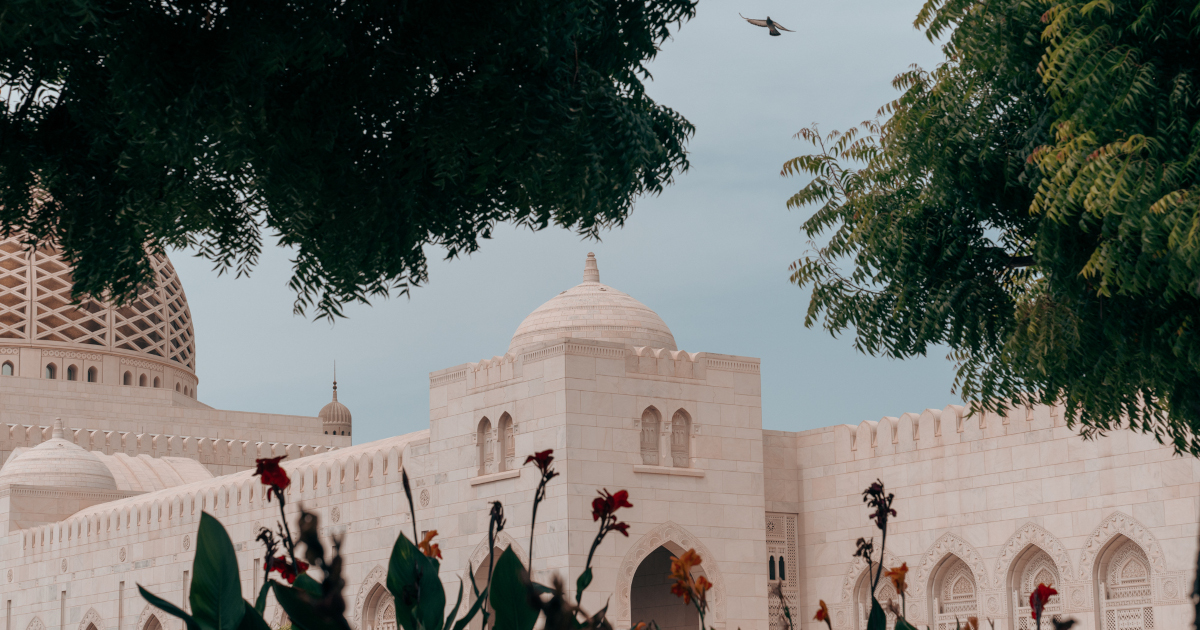Cette publication est également disponible en :
Français
Editorial partnership
The partnership between Amouage and Oman, which aims to relaunch the local incense industry, takes place in the historical and geopolitical context of the Sultanate. The brand’s intention is to contribute to the social and economic development of the country, while promoting Omani culture.
Oman is home to five million people, with over a third of them living in the capital city, Muscat. Lying between the Red Sea and the Gulf, the Sultanate occupies a unique location at the strategically important crossroads between the Mediterranean and the Indian Ocean. While Oman has fewer resources than its neighbours, with some natural gas and some oil its position overlooking the Strait of Hormuz means it manages a third of global traffic in black gold. This strategic regional characteristic no doubt predestined the Sultanate for its role as mediator. Known as the Switzerland of the Middle East, its foreign policy can be described as neutral. Oman plays key intermediating diplomatic role.
The history of Oman unfolded along its coasts, where the ports of Dhofar and the Gulf built ties with Africa, India, China and beyond. These were merchant cities where gold and ivory, spices and precious stones, silk and lacquer came and went, traded for Omani frankincense. In the 16th century, however, Omani maritime trade was brought to a halt as the Portuguese began to dominate the Gulf and Indian Ocean. By creating their own maritime empire on a par with their British rivals, Oman’s influence stretched along the east coast of Africa as far as Zanzibar and across the Strait of Hormuz into Iran and Pakistan, until the mid-19th century.
When Sultan Qaboos became Sultan of Oman in 1970, he used his mandate to transform the Sultanate from third world state to developed country. He adopted a policy for modernising Oman and undertook various economic reforms. Ports like Muscat and Sohar became industrial and logistics hubs.

© Mulook Albalushi / Amouage
He was not a run-of-the-mill sovereign: a cultivated man and serious lover of music, he ordered the Muscat opera to be built, a first for a Gulf state. He also decided to redistribute energy revenue to the local population. Thanks to the oil money and Sultan Qaboos’ vision, the Omani welfare state was able to introduce social changes with improvements to employment, health and education. The first public university opened its doors in 1986 and a ministry of higher education was set up in 1994.
The Omani government is now seeking to diversify the country’s economy. It is investing in green hydrogen by creating a solar and wind farm to provide power for making hydrogen from water. The current sultan, His Majesty Sultan Haitham Bin Tarik Al Said, who came to power in 2020, is expected to continue to implement a programme of economic reforms.
The government also aims to attract more foreign businesses and investment as well as to encourage tourists to visit its beaches, mountains and the easily accessible desert. A new international airport, able to handle 12 million passengers a year, opened in Muscat in 2018. The city of Salalah is also banking on tourism to help its development: the port is home to 200,000 people and is the capital of Dhofar, the region where frankincense trees grow. The renaissance of the frankincense industry driven by Amouage and opening of the Wadi Dawkah site to visitors could be part of these efforts to open Oman up to tourism.
AMOUAGE-OMAN, FORM AND SUBSTANCE
Its glass and crystal bottles are produced by Waltersperger, a hundred-year-old glassmaker based in Normandy in France. Its silver cases are made by Asprey, the prestigious London jeweller. And its fragrances are created by around thirty perfumers from all over the world, each with their own olfactory vision and approach.
Nevertheless, Amouage is deeply rooted in one place alone: Oman. Ever since it was founded in 1983, the fragrance house has stayed true to the very best of Omani perfumery traditions. The Sultanate’s flagship ingredients lie at the heart of its creations. They include frankincense from Dhofar, the rose that grows in Jebel Akhdar and ambergris harvested on the shores of the Indian Ocean.
Design is another area illustrating the bond between Amouage and Oman. The fragrance house based its logo on the Omani royal family’s arms. The emblem that decorates the perfume extracts displays a khanjar, the Sultanate’s emblematic dagger carried by men during official ceremonies, and two intertwining swords topped by the royal crown. The rectangular cap on bottles of men’s fragrances is inspired by the khanjar’s handle.

© Mulook Albalushi / Amouage
Women’s scents come in bottles that also draw on the most iconic codes of Omani culture. The first cap for Cristal & Gold Woman, for example, was decorated with the dome of the Ruwi mosque. It dates back to the time before construction of the Grand Mosque in Muscat, whose dome now appears on the square bottles, each one adorned with a Swarovski diamond symbolising the brilliance of Omani society.
The initial wave motif has now moved to the edge of the Amouage bottles. The fragrance house took its name from the words amour (“love” in French) and amwaj (“wave” in Arabic). A choice that testifies to the cultural symbiosis the brand has cultivated between Oman and France, the land of perfume.
Main visual : Sultan Qaboos Grand Mosque, Oman © Mulook Albalushi / Amouage
TABLE OF CONTENTS OF OUR MAIN FEATURE “WADI DAWKAH“
- Oman, strategically positioned in the Persian Gulf
- Dominique Roques: “Working on a multifaceted project focusing on frankincense trees is a wonderful opportunity”
- Renaud Salmon: “Wadi Dawkah is serving as a pilot project for the Omani frankincense industry”
- Wadi Dawkah, The Land of Frankincense (Podcast)
- Perfume as a way of life in the Middle East
- Sterenn Le Maguer-Gillon et Dominique Roques – Wadi Dawkah : The Incense Trade Route (Podcast)
- The Incense Trade Route, by Sterenn Le Maguer-Gillon
- Eating Frankincense (video)







